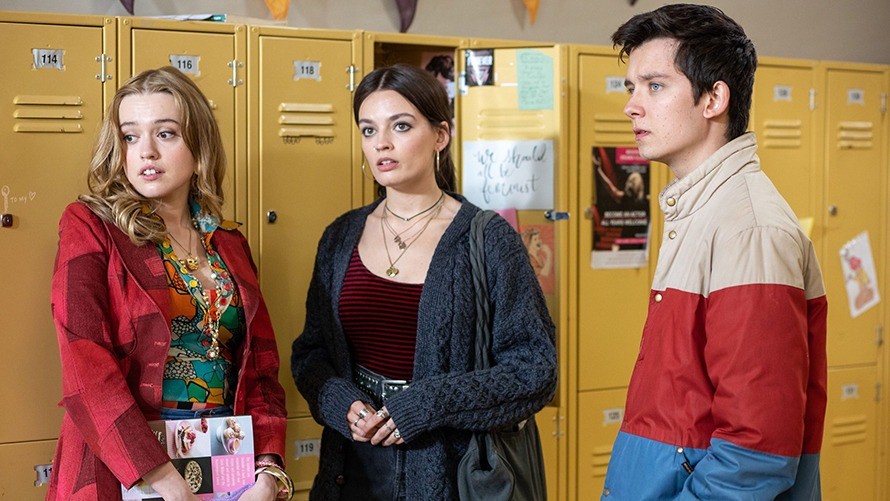Let’s talk about sex.
For young people, hearing those four words from your parents can be even more cringeworthy than an outdated meme.
Thankfully, a British teen comedy-drama on Netflix can tackle this tricky subject like few other shows have.
Sex Education (2019 to present) mainly follows Otis, a teen who starts an underground sex advice clinic at school, taking after his mother Jean who’s an actual sex therapist. But it’s all the inclusive, smart, and funny stories woven between an ensemble cast that has rocketed this series to its Netflix success of over 40 million viewers.
Here are three big things Sex Education is teaching a generation (and even older ones) on sex, dating and relationships the way many parents can’t.
(Warning: may include spoilers!)
1. How it explores LGBTQ+ storylines
Season after season, Sex Education has been lauded for its diverse representation and willingness to ask questions and challenge opinions.
A stand-out storyline is in season 3. Cal identifies as non-binary but is discriminated for wearing the “wrong” uniform because it isn’t girls’ uniform. But the audience learns this decision isn’t just about identity but also about feeling safe within their body.
When Jackson asks Cal to teach him about being in a romantic relationship with a non-binary person, Cal’s response is: “Here’s the thing. I’m still figuring out so much shit about myself, I can’t carry you too”. So brilliant. Sometimes, we need to understand ourselves better first, before having the capacity to nurture one another within a relationship.
And rarely on screen, we see the intricacies of gay sex, like how Eric and Adam navigate sex for the first time. They both imagined to be ‘bottoms’ – what does communication look like around that?
Or when Rahim teaches Anwar how to douche through graphs on the chalkboard in the science classroom, showing how there’s a lack of sex education in schools outside of hetero relations.
2. How it deals with trauma
It’s not easy talking about difficult news, even with loved ones. But a running thread in Sex Education is vulnerability and important communication in all its awkwardness, done with grace.
Across seasons 2 and 3 Aimee deals with being sexually assaulted on the bus and blames herself for it. We watch Aimee work through buried trauma and learn to love her body again, complete with vulva-shaped cupcakes.
Jean offers advice every victim needs to hear: “What that man did to you on the bus has nothing to do with your smile, or your personality, and is only about him. And it is absolutely not your fault.”
Side character stories are compelling too. In Season 3, Cynthia suddenly wants to have sex all the time with her husband. But as we later find out, Cynthia uses sex to avoid confronting the grief of her cat’s passing. One day, rather than giving in to the sex, the husband speaks to Cynthia about her loss as she begins to wail.
Another valuable lesson in sex, whether you’re 15 or 50.
3. How it depicts diverse sexual desires
Alien fantasies, intimacy for those with disabilities, self-pleasure for women, casual sex and even asexuality. Sex Education goes there, and the audience sees that sexual wants and needs are diverse and can be safely expressed.
One of the highlights in the entire show was when Florence visits Jean with concerns that she doesn’t want to have sex. “I think I might be broken,” she says. But Jean explains asexuality and says, “Sex doesn’t make us whole. And so, how could you ever be broken?” Three clap emojis!
As you can see, Sex Education’s premise makes it easy to drop sage advice through the characters of Otis and Jean throughout the series.
But the biggest lesson of all? That sex, dating and relationships can be weird, messy and complicated, and at the same time completely normal. You’re not alone.






